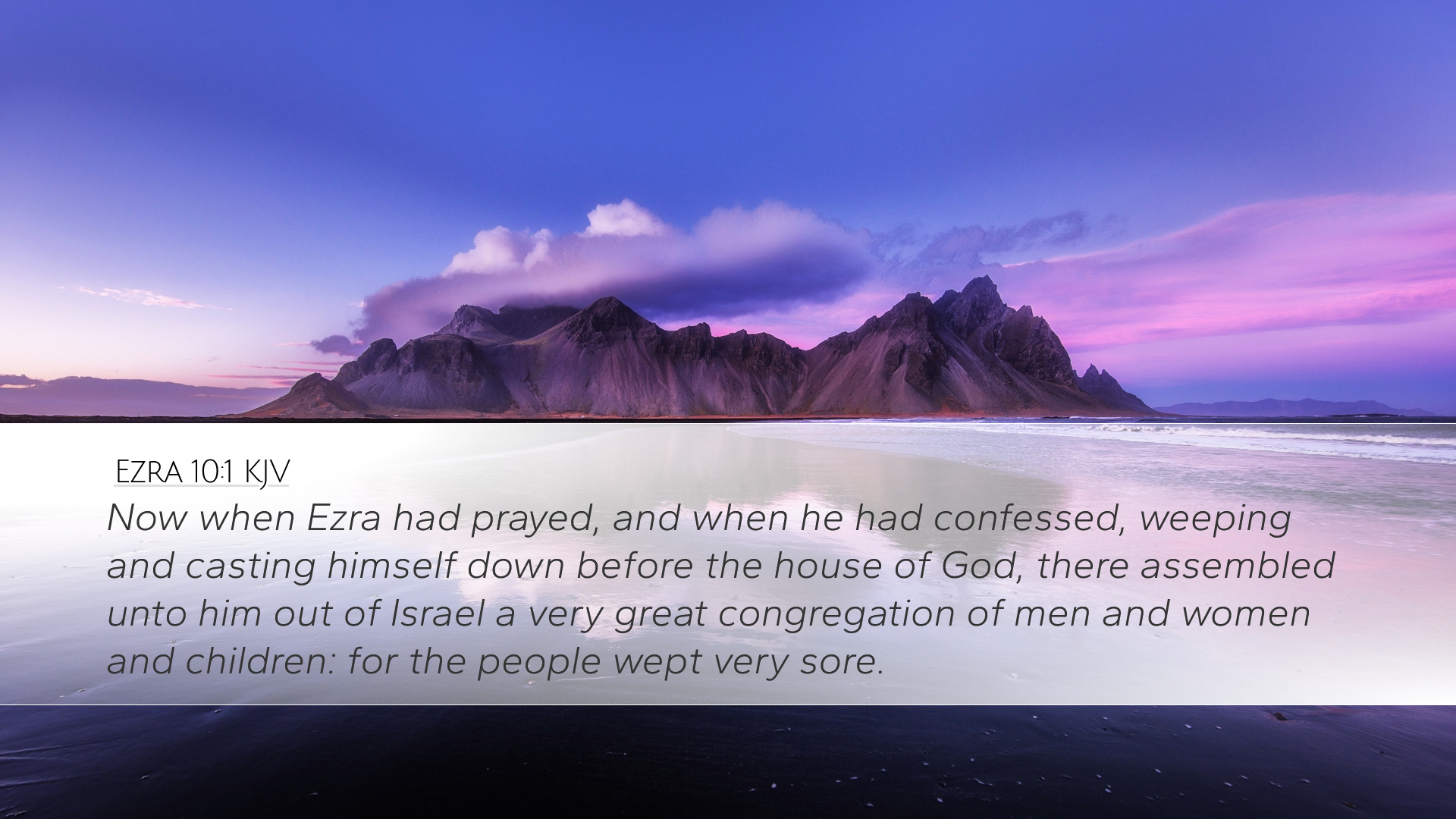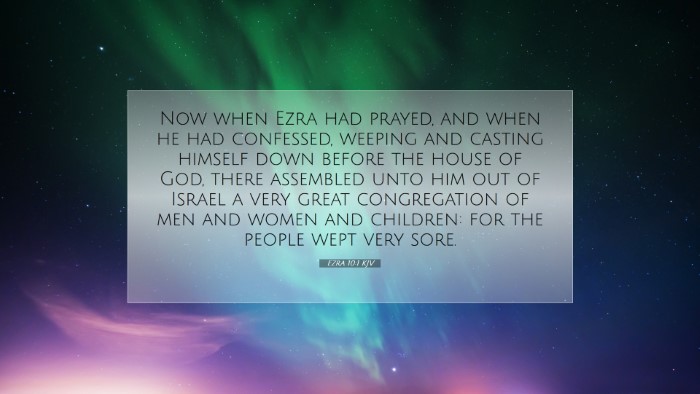Commentary on Ezra 10:1
Ezra 10:1: "Now when Ezra had prayed, and when he had confessed, weeping and casting himself down before the house of God, there assembled unto him out of Israel a very great congregation of men and women and children: for the people wept very sore."
Introduction
This verse captures a pivotal moment in the Book of Ezra, illustrating the profound impact of Ezra’s prayer and the communal response to the sin that had infiltrated the nation of Israel. It underscores themes of repentance, communal sin, and the power of intercessory prayer, providing rich material for exploration by pastors, students, and scholars alike.
Contextual Analysis
Ezra’s leadership follows the Babylonian exile, where the Israelites return to Jerusalem and face the challenge of re-establishing their national and spiritual identity. Chapter 10 deals primarily with the issue of intermarriage with foreign women, which posed a significant risk of apostasy for the Israelites.
The State of Israel
Historically, this period marked a restoration of the Jewish community post-exile, yet the new generation struggled with fidelity to God’s commandments. Ezra’s role as a priest and scribe gives him both a religious and educational influence. His actions in this verse indicate not only personal grief but a corporate concern that resonates through the assembly around him.
The Depth of Ezra's Prayer
Ezra's prayer is characterized by deep emotion. It serves as a model for genuine repentance and intercession. According to Matthew Henry, “Ezra’s weeping signifies a heartfelt sorrow for the sins of the people,” reinforcing the biblical principle that true repentance is often accompanied by visible emotion.
The Role of Weeping in Spiritual Life
Weeping represents a core requirement in the life of believers when confronting sin. Albert Barnes highlights that it is not merely a show of sorrow but a spiritual expression that signifies awareness of one’s alienation from God. Ezra’s public display of mourning catalyzes a collective response, affirming that individual repentance can lead to communal confession and restoration.
Corporate Response to Ezra's Actions
The response of the congregation is noteworthy. They gather around Ezra moved by his grief, which indicates a shared awareness of the grave situation concerning their covenant with God. Adam Clarke comments on the nature of this assembly, noting that it transcends mere spectatorship and reflects a communal acknowledgment of sinfulness. Their weeping is a manifestation of conviction that leads them toward collective repentance.
Theological Implications
- Repentance: The communal aspect of the congregation's response suggests that sin is not only an individual affair but carries corporate consequences.
- Intercessory Prayer: Ezra’s role as an intercessor illustrates a key function of spiritual leaders in guiding their communities back to God through prayer and confession.
- The Nature of Godly Grief: As seen in this narrative, godly sorrow can lead to transformative action, marking the path from sin to restoration.
Conclusion
Ezra 10:1 serves as a rich text for understanding the dynamics of communal sin and repentance. Through Ezra’s powerful example, both leaders and laypersons can learn about the importance of emotional integrity in prayer and the communal aspects of repentance. This passage encourages a collective approach to reconciliation with God and invites deeper theological reflection on the nature of sin and grace within the community of faith.
Reflection Questions
- In what ways can church leaders model Ezra's example of prayer and confession within their communities?
- How can congregations cultivate an environment where communal grief over sin leads to actionable repentance?
- What does this verse teach us about the role of emotions in spiritual practices?


